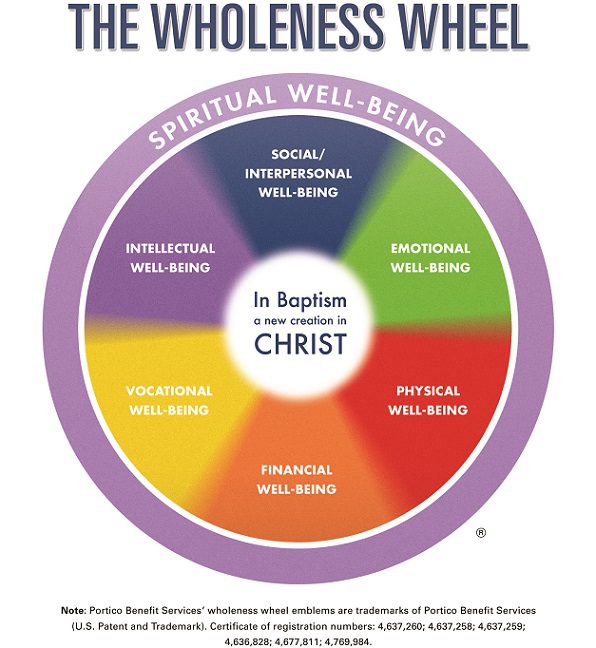Some stewardship committees focus most of their attention on the fall fund drive. Frankly, that’s plenty of work. But our calling as stewardship leaders is not just to the fall “ask.” We are also called to help shape the identity of stewards among our peers and as a community. We are entrusted with many assets, some of which are physical (like buildings and money) and some of which are relational (like our congregational community or our congregational mission). All of these are inflection points where we can invite others to think and act like stewards.
Peace,
Catherine Malotky, Center for Stewardship Leaders
Stewarding Congregational Wellness
By Catherine Malotky, MDiv, CRC®
The end of an annual fund drive always reminds me that we stewardship leaders don’t just do the financial footwork to keep our congregations’ mission moving forward and doing good. We can also offer a perspective that takes seriously the responsibility to steward the whole life of the congregation alongside those who are paid to lead (clergy, deacons and other staff) and those who are elected to lead (the governing body of the congregation, like council/session/vestry).
Year-round stewardship has often been framed as teaching congregational members about managing their own and their family’s wellness, perhaps borrowing from the Wholeness Wheel (see below) to help explore the many facets of wellness. Plenty of folks get wonderfully creative with their offerings.

But this instinct toward stewarding our wellness really should apply to congregations, too. Think about what this might look like:
- Social/interpersonal: Is there leadership in your congregation to be sure the community is robust, encouraging healthy communication, broad welcome, and good “on-boarding” of visitors and new members? Is there plenty of opportunity for those participating in your congregation to know each other?
- Emotional: What’s the current emotional temperature of your congregation? What influences the way your community feels about itself and its mission? How might you improve your congregation’s resilience?
- Physical: How healthy is your physical plant, if you have one? Have you been skating by maintenance issues for a while, or is everything at its best? Are you using your physical assets for mission with your external community as well as your internal one?
- Financial: How are things shaping up for next year’s budget? What might you work on during the coming months to prepare the way for the next budget process? What will you need to interpret? Have you done an audit of your financial practices?
- Vocational: Are you a congregation just because, or are you clear about your “why”? What’s your mission? How deeply are congregational members bought in?
- Intellectual: Are people learning and growing intellectually in your congregation? What cool Bible studies are you doing? Does your adult forum capture people’s interest? What about book groups, small groups, or a speaker series?
Now, the truth is, trying to tackle all of this could exhaust even the most dedicated of stewardship committees. Yet, we are stewards of our congregations, along with every other member. How might you and your stewardship leader colleagues take a read on your congregation?
Note what’s going well, and what could use a little boost. Celebrate what’s going well. Interpret that for the congregation, and frame it intentionally as good stewardship of the congregation and its mission. We can teach others to adopt this kind of perspective too.
Then turn your attention to something that needs a boost, and work on it in the coming months. Maybe offer to work together with another committee. Read a book on organizational resilience, for example, and pay attention to the kinds of behaviors and attitudes that seem to contribute to resilience.
One of those attitudes is having the capacity to hold space together for a broad array of perspectives and talk openly and respectfully in the midst of those differences. How do you do with this? Are you fighters? Avoiders (conflict averse)? You can help your congregation build resilience by exercising those muscles a little. Do you have any assets/expertise within the congregation to help?
About the Author
With a passion for reducing anxiety about personal finance, Catherine Malotky, Grant and Project Manager for the Center for Stewardship Leaders at Luther Seminary, comes to this work as an ELCA pastor, administrator, writer, retreat leader, and coach. She has contributed at Rethinking Stewardship conferences (2012 and 2014), co-authored the ELCA Stewardship Competencies, and was a primary writer of the ELCA’s version of Lilly’s ECFPM grant.
Photo by Pourya Sharifi on Unsplash
[[author title=”About the Center”]]



